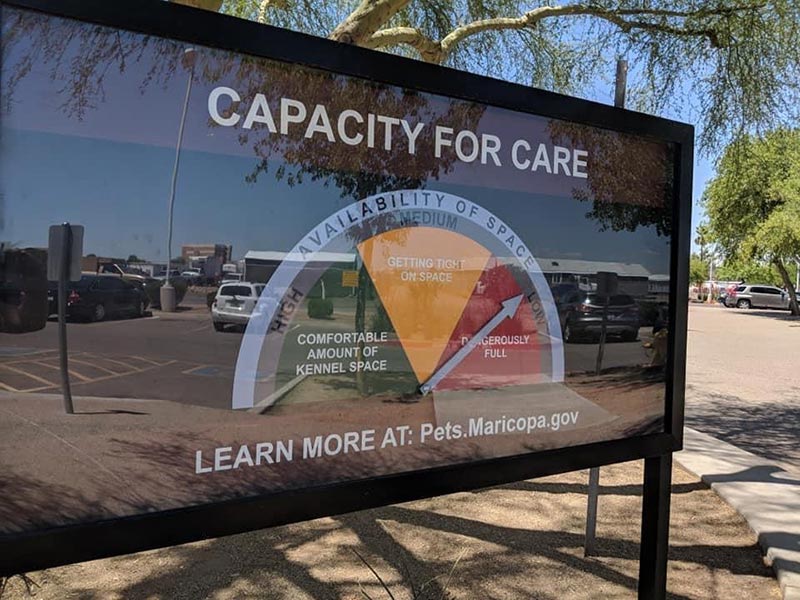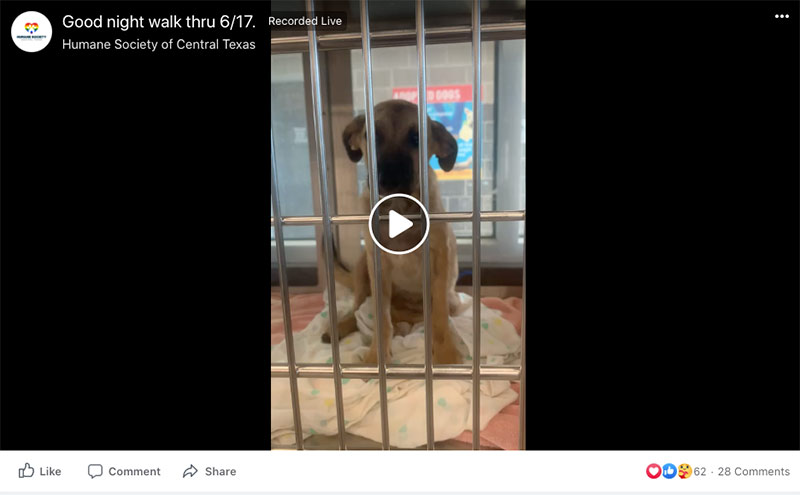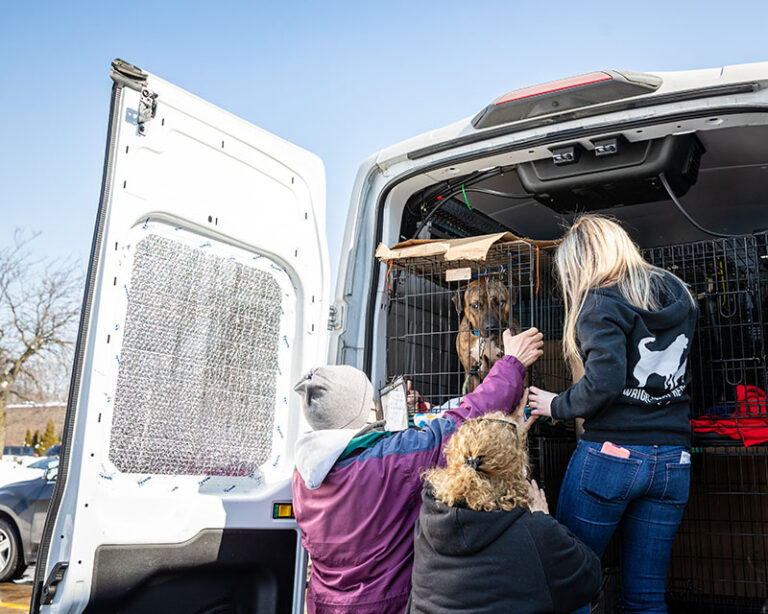UPDATE, March 15, 2022: Check out this new blog on what to do if your shelter is full or close to full, to support families in your community and keep pets from unnecessarily entering the shelter.
If your shelter is full or nearly full, you may find you need to ask the community to help keep non-emergency pets out of the shelter for several weeks or more. Here are 12 tips on how to prevent euthanasia for space AND keep your community on your side.
1. Put out an emergency news release asking for help.
Here is a great example from Palm Valley Animal Services.
2. Make a sign and or graphic showing how close you are to capacity.
Some organizations have created capacity signs with an arrow that points to how full a shelter is on a particular day.
Green means ample space. Yellow means tight. Red means at capacity. You can also add purple to mean above capacity. This easy visual engages the public and lets them know when you really need help, with a glance.

3. Stream walk-through videos showing pets in their kennels.
You can give the public an idea of the number of pets needing immediate homes, and introduce people to the animals. These kinds of videos grab attention and get people to come and help.
Extra credit: The Humane Society of Central Texas does a nightly walk-through of their kennels on Facebook live!
4. Use the right language for the situation.
The term “managed intake” can easily be misunderstood by the public. Instead, consider using plain language that people who don’t work in animal welfare will easily understand. Try: “We are full and only accepting animals who need immediate help. This ‘essential intake’ policy is to prevent euthanasia for space.”
5. Don’t “close” intake.
Move to an “essential intake only,” status, so you’re keeping pets out who can be safely housed in the community until the space crisis has passed—but not closing the door on sick, injured, and orphaned pets who do need your immediate help.
The National Animal Control Association provides these guidelines for defining essential intake versus non-essential.
6. Put out the Bat-Signal in the media and online.
Let the public know you urgently need help. Here we’ve got examples of effective emergency appeals for foster homes and adopters.
7. Make it easy for people to help the same day you ask.
Sweep away ALL barriers that get in the way of people fostering and adopting.
8. Expand your open adoption/foster hours.
Open your doors and keep them open. This means people who can’t make it during regular hours, can get involved and get pets out of your shelter.
This is a good example of a shelter offering adoptions seven days a week. They also do adoptions online and in person, offer a matchmaker program, and use welcoming language to encourage the community to adopt.
9. Plan an adoption event.
Get creative and plan a Midnight Muttness event or host a foster kitten adoption party. These are attention-getting events that draw folks in—and get pets out.
10. Utilize supported self-rehoming.
Direct pet owners who are surrendering to try to adopt out their own pets via Home-to-Home, Rehome, or social media platforms. Encouraging a mutual aid system during times of space crisis can empower people to help each other!
11. Ask the public to hold found pets for at least 48 hours.
This increases the animals’ chances of getting home, and keeps them out of the shelter. Most lost dogs are found less than a mile from their homes. You can ask the public to file a found report, put up signs, and post on social media. Offer food, supplies, and other assistance.
12. Ask for transport assistance.
In some cases, you will need to transport pets out to other communities if the immediate volume is too high. This transport webinar provides tips and support on how to find and cultivate rescue partnerships. Register your organization on Doobert to connect with transport volunteers and to access the national rescue partner map. Join the AmPA! Shelter and Rescue Support Page and search keyword “transport” to network with rescue partners that may be able to help.







